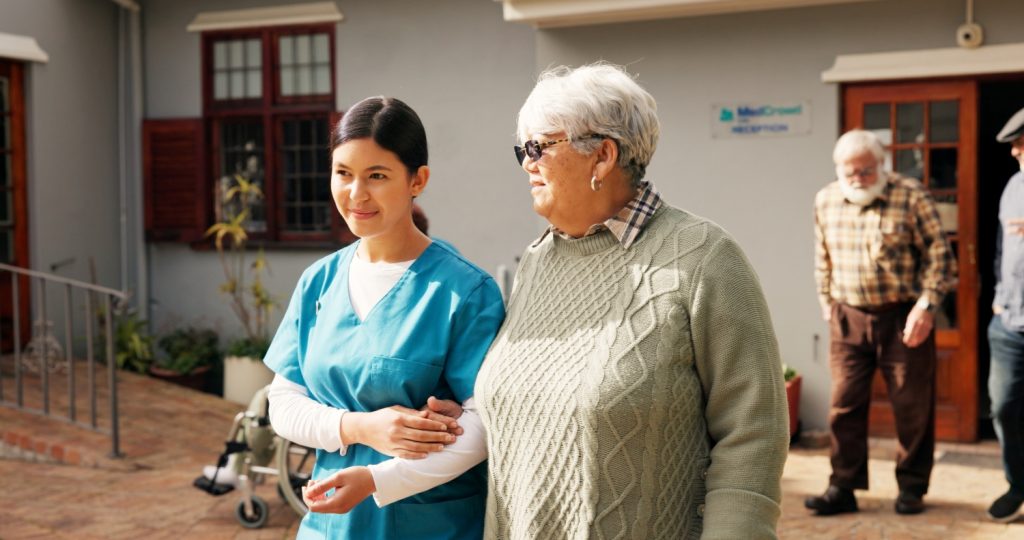Americans are living longer than ever. But while lifespan is extending, “brain span,” or the number of years we operate at high cognitive capacity, hasn’t kept pace.

This mismatch is one of the greatest overlooked challenges in today’s workforce. Older adults are now the fastest-growing segment of workers in the United States. According to data from the Pew Research Center, adults ages 65 and older are projected to account for 57% of labor force growth over the next decade. But this population is facing increasing cognitive demands in a professional world that rarely meets them with the right support.
Why Brain Health, and Why Now?
Workplace wellness initiatives to address stress, burnout and productivity loss are not new. But with a focus on what’s wrong, uptake is often low, and impact inconsistent.
Is there a more effective approach? Based upon our decades of work with populations across the lifespan, the Center for BrainHealth believes there is: empower individuals with simple, science-backed strategies and tools so they can build more brain-healthy daily habits.
‘The brain has a lifelong ability to adapt both its structure and function. Studies demonstrate that it can be strengthened at any age through brain training and intentional use.’
Brain strategy training teaches people how to use their mental energy more effectively and efficiently, leading to meaningful improvements in executive function and general well-being. And these gains are sustainable.
This kind of investment doesn’t require major infrastructure or budget overhauls. What is required is learning how to use your brain more effectively. And in our experience, no one regrets learning about how their brain works and how they can make it work better.
The brain has a lifelong ability to adapt both its structure and function. Studies demonstrate that it can be strengthened at any age through brain training and intentional use.
A Case in Point: The Power of Investing Across Ages
At Kepner CPA, a small accounting firm in Dallas, the entire team, including junior staff in their 20s and the firm’s founder, who’s in his 80s, participated in a 6-month BrainHealthy Workplace engagement that introduced cognitive strategies for strategic attention, integrative reasoning, and innovative thinking.
By the end of the program, each participant showed measurable gains in cognitive performance, and the firm achieved and sustained a 25% increase in revenue without adding any new employees.
CEO Gerald “Kep” Kepner estimates that applying brain-healthy strategies saved him 30%–40% of his time.
“Brain training is a part of the way we would distinguish ourselves from others. Quite frankly, I think it’s going to be commonplace in businesses in years to come,” said Kepner.
Newly empowered, Kep went on to write a book and launch a new business to help others apply tools for better brain health. After decades in leadership, he says his most productive brain years came in his 80s. And he’s confident that anyone who embraces these strategies can achieve the same.
‘Brain training is a part of the way we would distinguish ourselves from others. Quite frankly, I think it’s going to be commonplace in businesses in years to come.’
In our experience, people who engage in cognitive training begin to enjoy their most productive and fulfilling brain years. Rather than declining, their performance and confidence improve as they’ve learned how to manage attention, navigate complexity, and think more strategically.
The benefits extend beyond work. Gains show up in overall well-being, personal relationships and resilience. Mentally energized, purposeful and productive individuals contribute more meaningfully to the economy and place less strain on health systems and social services.
So, What’s Holding Companies Back?
Of course, one would ask: if the brain health and performance approach is so effective (at a low cost), why aren’t more companies doing it, particularly for older workers?
We see three main barriers:
- Poor return on investment of mental health and wellness approaches have made leaders wary about “yet another program.”
- There exists a bias against investing in older workers. Many organizations see older employees as winding down, not ramping up, and therefore hesitate to invest in their continued development. In a 2020 global employer survey, AARP found that fewer than 4% of firms had programs in place to integrate older workers into their talent system.
- While awareness of mental health has grown, the idea of brain performance as something that can be trained and improved is still gaining traction.
A Turning Point
Despite these barriers, the brain health and performance revolution is gathering momentum. In a world of digital overload and underwhelming wellness efforts, individuals are eager to take charge of their health—and their brains.
This is spurring a growing openness to integrate brain-based strategies into leadership development, team performance and organizational culture.
The demands of the modern workplace—continual learning, adaptability and complex decision-making—are not going away. These are skills that can improve with executive function training, and upward potential is not bound by age.
Six Tips to Strengthen Brain Health
The science behind brain health is clear, and the steps are actionable, inexpensive and personally empowering. For older adults navigating ageism, rapidly evolving technology and rising cognitive demands at work, brain health can be a secret weapon for staying adaptable and engaged.
- Invest in Mentorship: Years of experience bring valuable perspective and leadership to the workplace—but too often, older adults become the “frontal lobe” of their team, acting as the sole deep thinker and decision-maker everyone turns to. By mentoring others, experienced leaders can invest in their team’s brainpower, strengthen creative problem-solving and distribute cognitive engagement across the group, fostering a more innovative team in the long-term.
- Find Your Prime Time: Identify the time of day when you feel the most mentally sharp and reserve that time for tasks that require deeper thinking. Use this window to pursue meaningful goals every day. Achieving these small wins fuels your brain’s motivation systems by boosting dopamine and builds momentum to keep you mentally engaged and thriving.
- Set Long-Term Goals: Even in later career stages, future-oriented goals fuel your brain’s frontal networks and drive feelings of purpose and achievement. Don’t let an upcoming retirement be the endpoint: consider how you can support long-term work initiatives, shape your legacy, and create a robust community.
- Mind the Multitasking: Your brain is wired to perform one task at a time and switching between tasks can drain mental energy and decrease performance. While the workplace demands juggling many responsibilities, prioritizing single-tasking boosts both productivity and mental clarity.
- Keep Learning: There’s always something new to learn. Lifelong learning can build cognitive reserves and help stave off cognitive decline—but only when your brain isn’t overwhelmed. Choose one or two areas that genuinely interest you, at work or outside of work, and focus your energy there to strengthen neural connections without overextending your brainpower.
- Prioritize Sleep: Consistent, quality sleep is a potent elixir for clarity, emotional balance, memory and mental energy.
It’s time to normalize brain health as a lifelong endeavor—one that begins early and continues well past traditional retirement age. And one that individuals and organizations can invest in together.
“I worked hard my whole life. But it wasn’t until I came to the Center for BrainHealth and learned these tools that I actually had my best brain years — in my 50s and beyond,” said Stephen White, JD, COO, Center for BrainHealth.
Olivia Nail-Beatty, MS, is a research assistant, Andrew S. Nevin, PhD, is director of the Brainomics Venture, and Jennifer Zientz, MS, CCC-SLP, is director of Programs, all at the Center for BrainHealth, Dallas, TX.
Photo credit: Shutterstock/Ground Picture
Generations publications are produced by the American Society on Aging, the nation’s largest multisector membership association for professionals working in aging. Want to receive the latest Generations articles and other updates from ASA right to your inbox? Subscribe to our newsletter.













